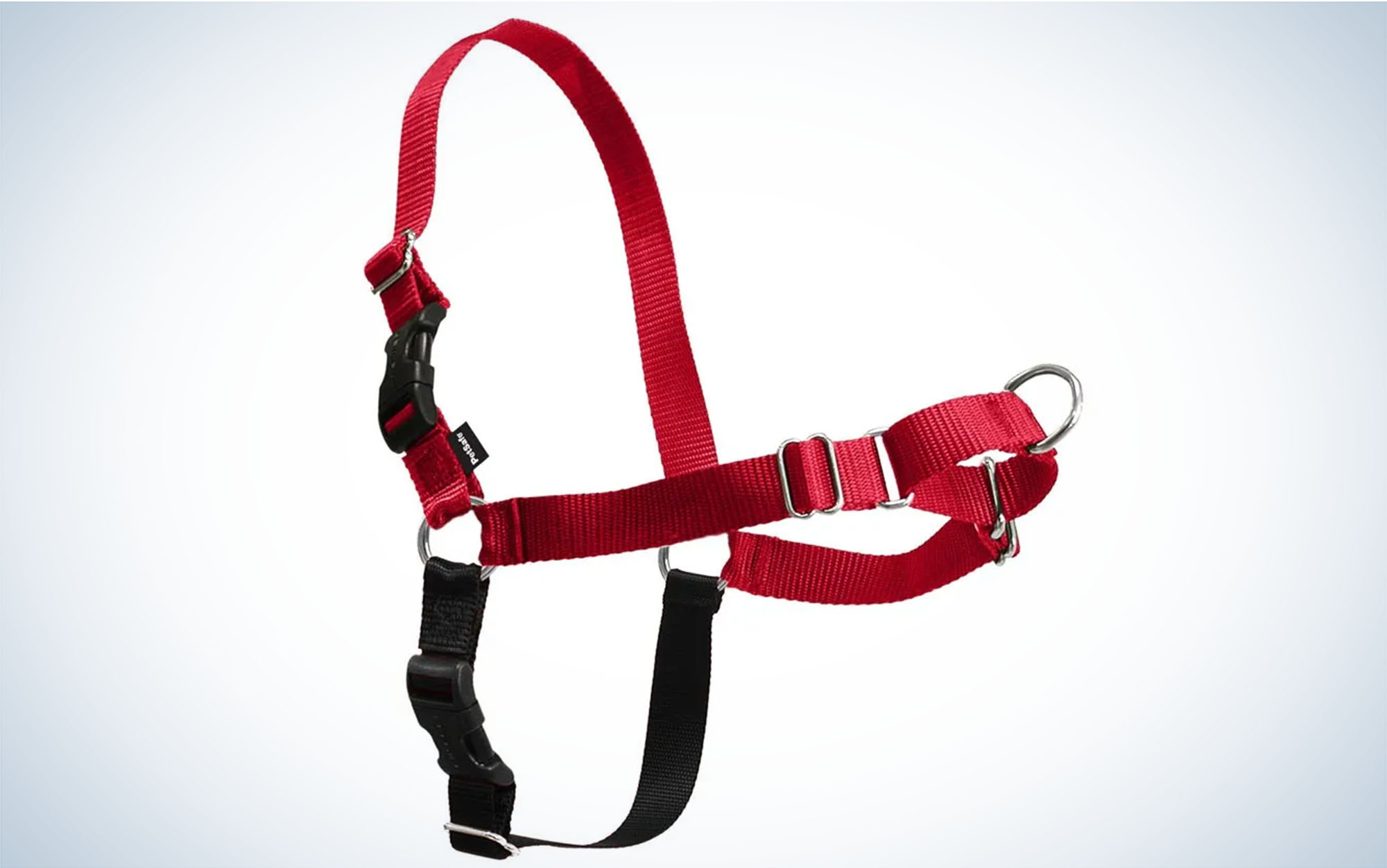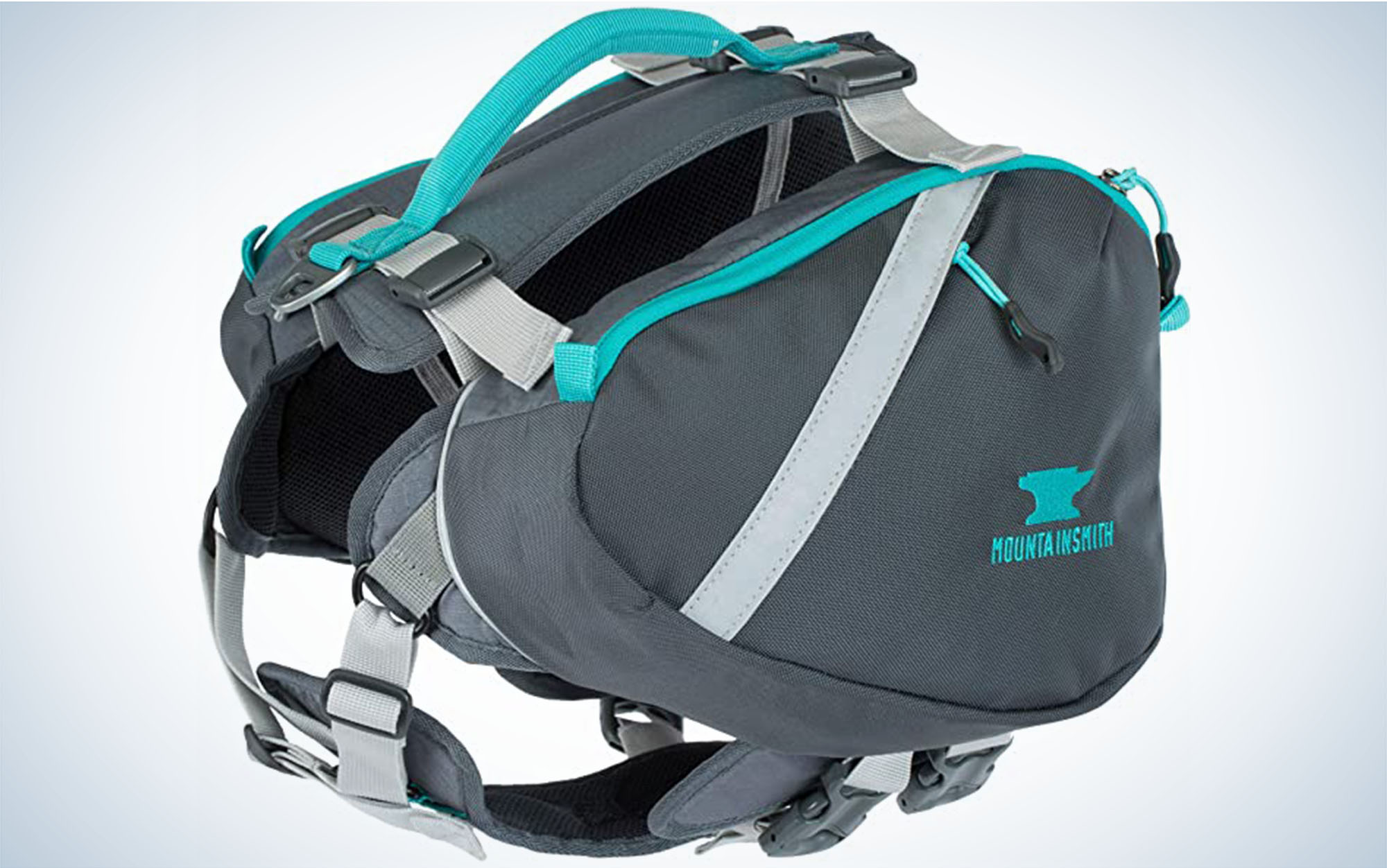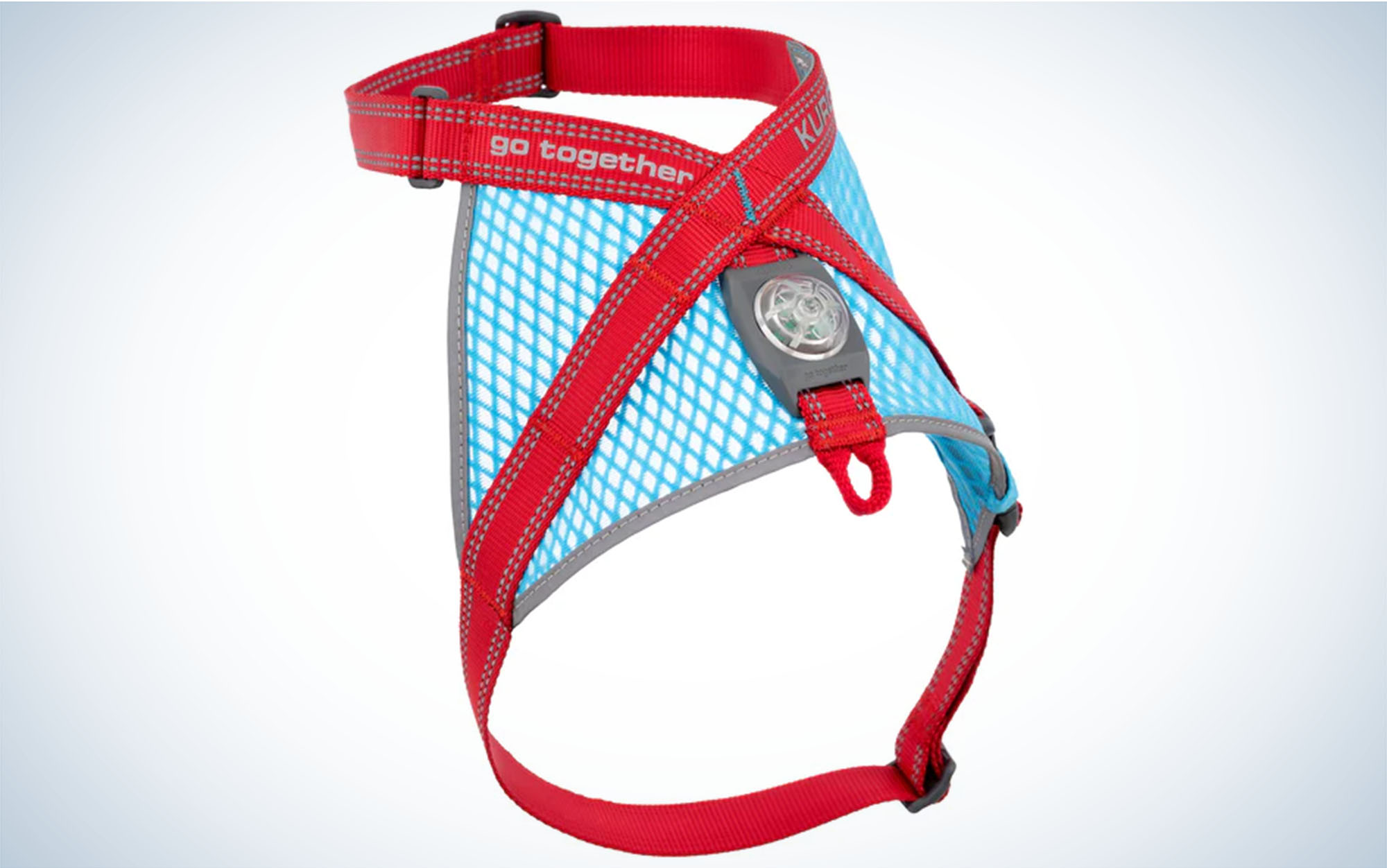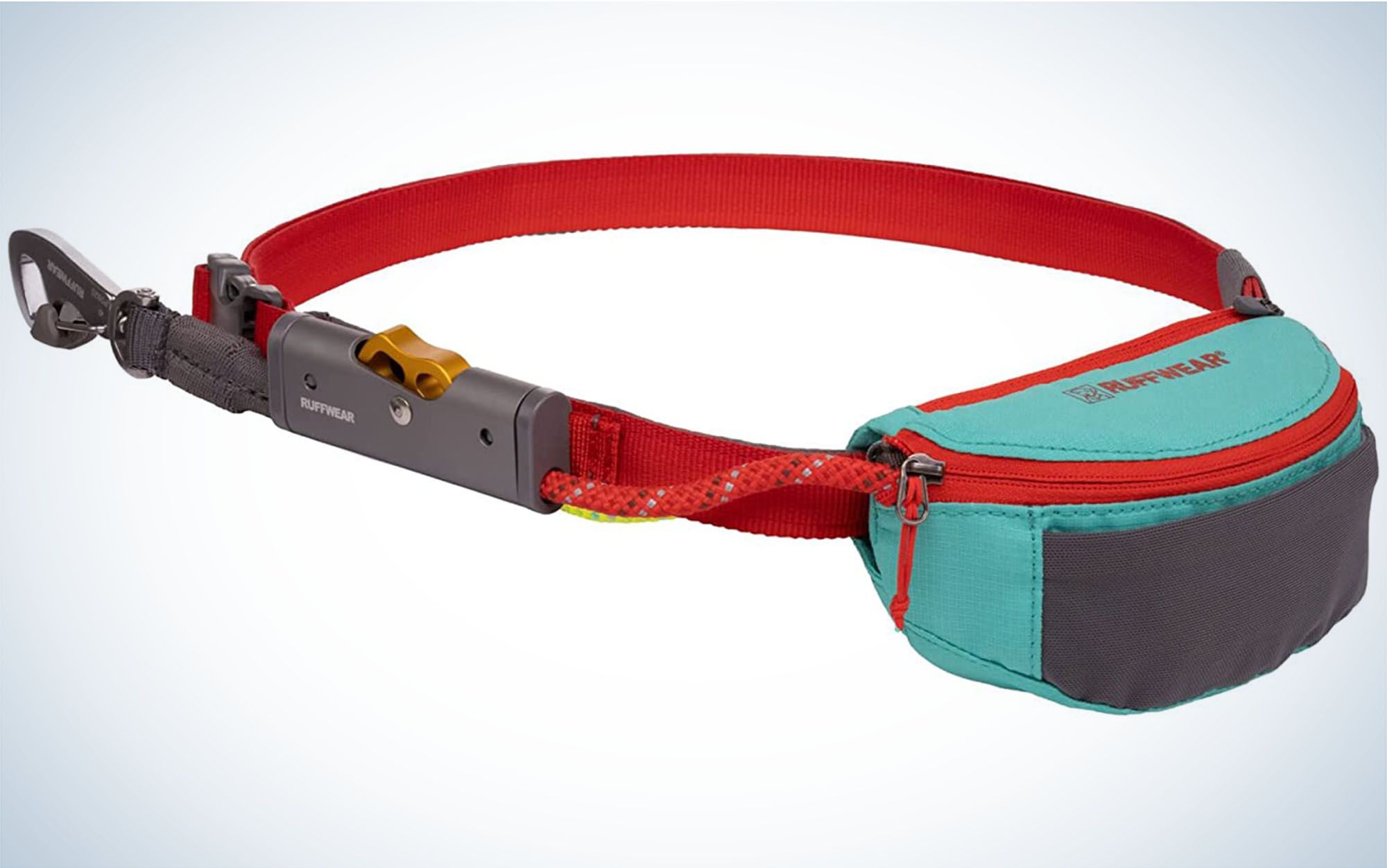We may earn revenue from the products available on this page and participate in affiliate programs. Learn More ›
Published Feb 26, 2023 6:03 PM
We all dream of living somewhere our dogs never need to be on leashes, where they can roam free and obey us perfectly by voice command. But that just isn’t the world we live in. Most of us need to keep our dogs on leashes even on hikes in the mountains because either regulations require it or that whole voice-command training hasn’t gone as planned. While attaching a leash to a collar can work just fine in a pinch, harnesses are often better for several reasons, including that they are better for the dog and easier for you to control.
Do a quick search, and you’ll find plenty of options out there, but I tested a bunch to help you narrow it down. Here are my picks for the best dog harnesses for hiking.
Testing the Best Dog Harnesses for Hiking
Your dog’s hiking harness should fit comfortably, snugly, and securely. After all, Rover is putting as many miles in this harness as you are in your hiking shoes. I tried half a dozen harnesses on my two dogs, an 11-year-old, 80-pound Labrador who has spent most of his life off leash and would like to keep it that way, and a 1-year-old 50-pound Labrador with as much energy as you would expect from a 1-year-old. We went for hours-long walks in the high plains outside my town in rural Wyoming and for long Nordic skis in the backcountry. I also talked with other active dog owners about the harnesses that work best for them and why.
The Best Dog Harnesses for Hiking: Reviews & Recommendations
Best Overall: Ruffwear Flagline Dog Harness
Key Features
- Handle on the top
- Three places to attach a leash
- Lightweight
- Five sizes for dogs with chests as small as 13 inches to as large as 42 inches
Pros
- Sturdy design with broad coverage on the back and chest to disperse the load
- Liner that keeps out gravel and sticks to protect skin
- Multiple color combinations
Cons
- Less breathable than others on hot days
- Difficult to quickly adjust size
This harness is made for dogs who might need assistance scrambling in the backcountry or taking on hiking trail obstacles. It’s also perfect for someone who wants some versatility in their harness. Tuco, my 11-year-old, did not want to sit still while I put his harness on each time but was perfectly content once it enveloped him. We spent hours walking in the prairie and skiing.

Ruffwear designed this lightweight harness with a debris-resistant liner to protect from debris on the inside, and it works. Tuco frequently ran through thick sagebrush and tall, dried grasses and never had issues with chafing under his harness. He also didn’t seem to mind when it was left on him for hours lying around the house after our hikes.
The handle on the top allows you to lift up a smaller dog or give a larger dog like mine a little bit of help climbing up and over rock ledges and trees. On the downside, in part due to its sturdy construction, it could potentially become too hot for him on mid-summer hikes.
Best for Pullers: PetSafe Easy Walk No-Pull Harness
Key Features
- Loop on chest to discourage pulling
- Multiple color options
- Eight sizes from petite to extra large
- Labeled straps to simplify gearing up
Pros
- Lightweight and easy to use
- Front metal ring and unique loop system does help prevent pulling
Cons
- Small straps may eventually wear out
- If not adjusted properly, dog can still pull
Plenty of harnesses advertise themselves as no-pull, and most on the market now come with a place to attach the leash on the front of the dog’s chest. It’s a great idea, but the utility varies slightly by the harness. After talking with other dog owners, I tried several kinds and found the Easy Walk Harness to be the most effective. The idea behind the chest attachment is that it pulls a dog slightly to the side, preventing your pet from using the full strength of its four legs to drag you forward. It’s a great idea, but if harnesses aren’t adjusted right, the harness can pull awkwardly on a dog’s front leg.
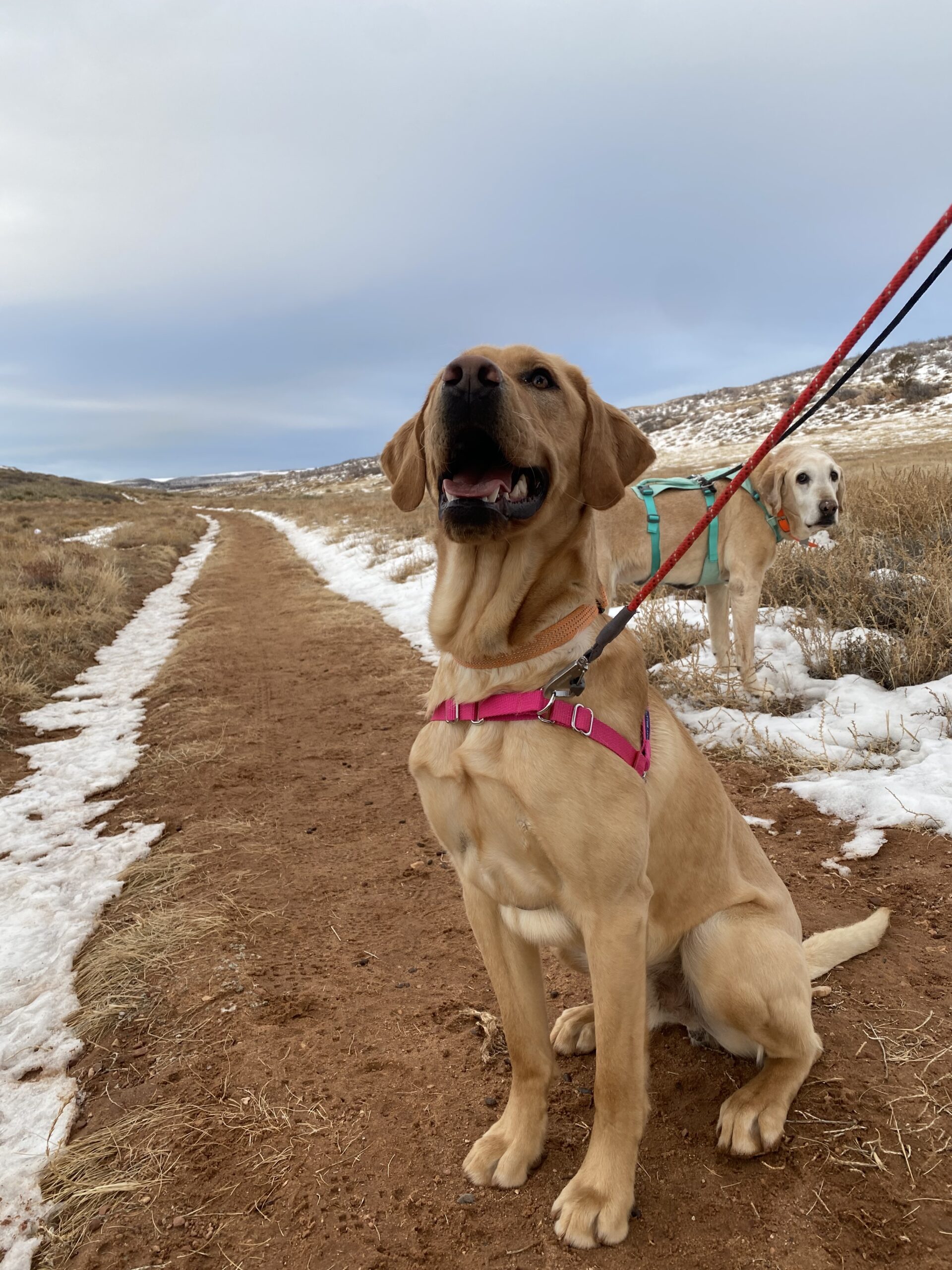
I took my young and exceptionally enthusiastic Labrador on many hikes with this, and while he certainly still pulled, it was much better than attaching to the back of the harness or watching him periodically choke himself on a collar. Our walks have become increasingly pleasant as he realizes he can’t pull with all of his strength.
Best Pack: Mountainsmith K9 Dog Pack
Key Features
- Four-point adjustable harness with padded sternum pad
- Two pannier compartments
- Tapered torso shape for better fit
- Water-resistant interior coating
Pros
- Holds as much as a dog will eat for at least a week in the backcountry
- Fits snugly and doesn’t rub
- Handle on the top to help lift a pup up or over any obstacles
Cons
- Only comes in three sizes
- Not waterproof
The first dog pack we used for backpacking years ago was a hand-me-down from my parents when they backpacked with their malamute in the early 70s. It did the trick but was also a pretty basic design. Packs have improved since then, and the Mountainsmith K9 Dog Pack is a great example. It’s still simple—dog packs don’t need to be fancy—but the improvements in the past few decades are notable.
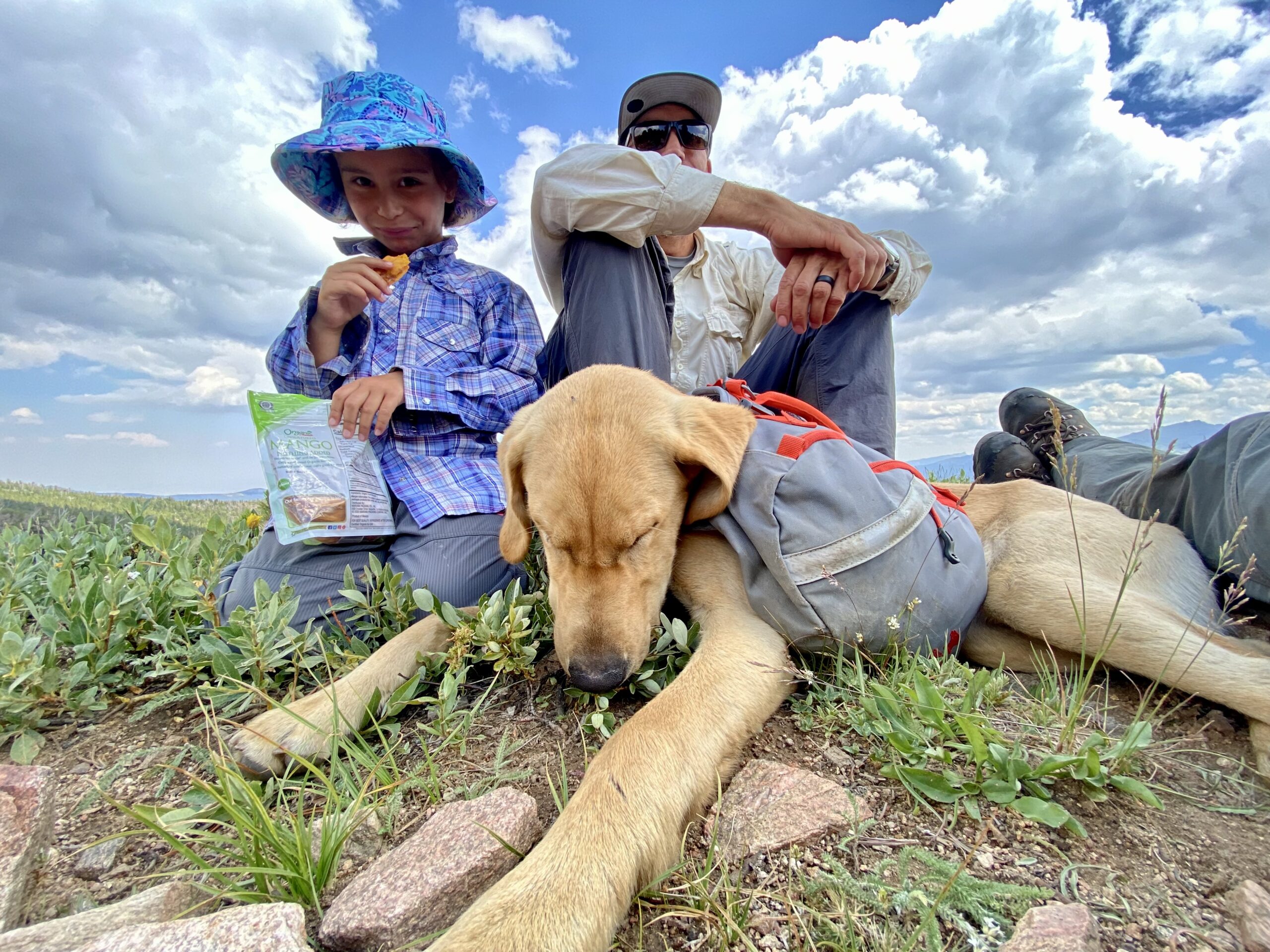
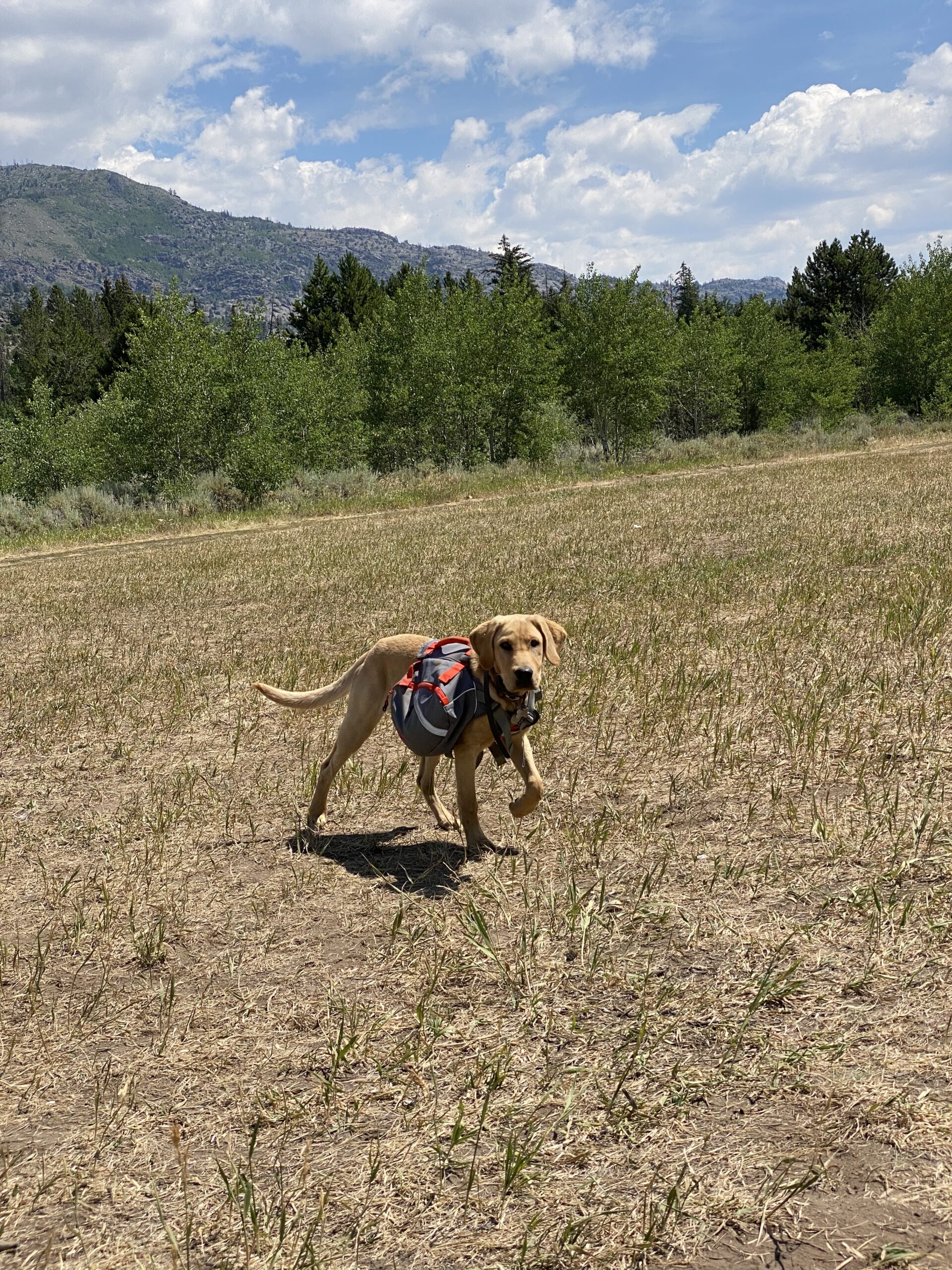
The side panniers are plenty large enough to carry enough food for our 50-pound young dog to go on a six-day backpacking trip. The clips are solid and won’t easily break. The adjustments ensure a snug fit. The material is also sturdy enough to stand up to plenty of scrapes against trees and rocks as he clamored under downfall and through narrow rock crevices. He generally would prefer not to wear it, due more to the extra weight than the pack itself. But it must be comfortable enough because he didn’t seem to mind having it on for eight+ hours a day.
Be aware the interior material on the panniers is water resistant, but it is not waterproof, which means if your dog goes for a swim or is caught in a serious rainstorm, the food can get soggy if it isn’t contained in something waterproof like Ziplock bags or even a plastic jug.
Best for Dark: Kurgo On-Trail Run-Lite Vest
Key Features
- LED light that blinks or stays solid
- Reflective trim and threading
- Lifetime warranty
- Four sizes from 16 to 42 inches around the chest
Pros
- Lightweight and breathable for hot days
- LED and reflective tape make low-light or dark walks safer
- Affordable
Cons
- Mesh will eventually wear and tear
- Not as sturdy as heavier-duty harnesses
If you only want to buy one of the best dog harnesses for hiking, and you imagine you will use it for hikes but also early morning or late-night walks, consider the Kurgo On-Trail Run-Lite Vest. The lightweight vest is perfect for warm weather and the reflective strips give you added security that headlights will see your pup. The main feature, which otherwise fits as a standard harness, is the light.

The detachable light sits on the top of the vest and turns on and off by pressing on the light. It not only gave me an additional way to signal to traffic that my dog and I are walking but also helped me keep track of him when we’re walking in dark, winter mornings, especially when I let him off leash.
Best Leash Belt: Ruffwear Hitch Hiker Leash
Key Features
- 12-foot leash
- Waist belt strap extends to 49 inches
- HitchLock rope adjuster allows you to pull in or let out as much leash as you need
Pros
- Keeps hands free
- Convenient pocket
- Allows you store extra leash and clip system
Cons
- Belt is relatively thin, especially if you have a strong dog pulling hard
- Pocket for leash can become cumbersome if you’re letting a lot out and pulling it in frequently
One of the most annoying parts of hiking or walking with dogs on leashes is holding onto the leash. Even if you have a dog that stays close to you, it’s something you need to hold in your hand. If your dog is not properly leash trained, you risk the dog jerking your arm and throwing you off balance.
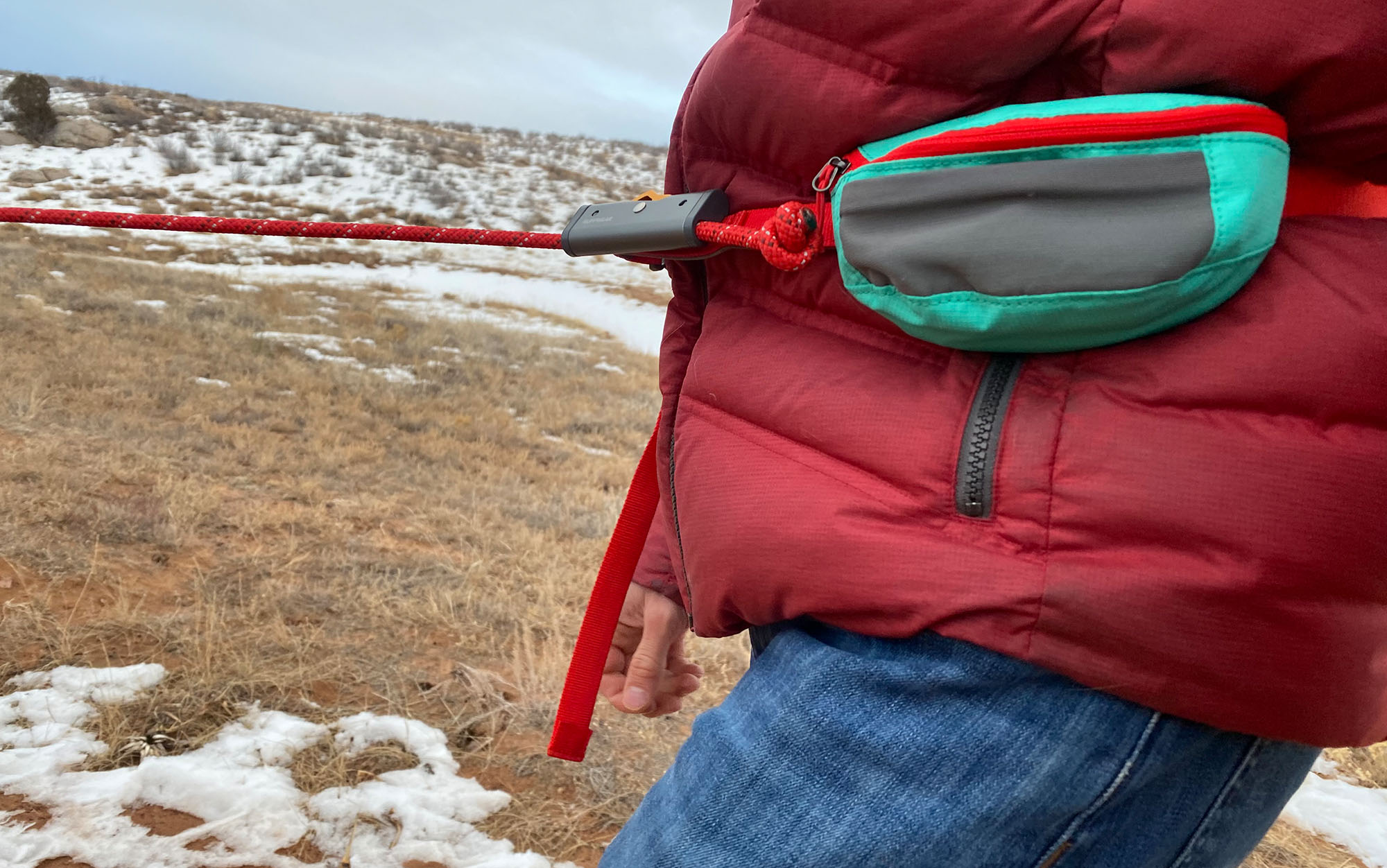
The Hitch Hiker Leash solves these problems by attaching the leash to your waste instead of requiring you hold it in your hand. The locking system works well even when repeatedly jerked on by large, strong dogs. One of the main downsides of the system is that it’s not easy to release from your body if your dog starts to pull you off balance. My young dog lunged after a rabbit as I stepped on a piece of ice, and while I managed to retain my balance, I could have seen it ending poorly.
How to Choose the Best Dog Harness for Hiking
You and Your Dog’s Needs
Before you buy a harness, consider your dog’s age and ability as well as your own needs. Is your dog old and walks slowly? If so, you may not need much. But conversely, if you will be in rugged backcountry, you may want a harness with a handle to help your old friend. Do you have a dog who pulls and is working on leash training? Do you live somewhere hot, and you don’t want a full-coverage harness, or somewhere cold and plan to use it in conjunction with a dog jacket?
Fit
Pay careful attention to each manufacturer’s fit guide just as you would buying technical clothing for yourself. Use a tailor’s tape measure if you have one. If not, measure with a piece of string and then line it out on a ruler to find the exact measurement.
Price
Harnesses vary widely by price. The cheaper ones may not last as long, but you also may not use the harness that often. If you plan to use a harness for the life of your dog, consider investing in one of the sturdier ones.
FAQs
Q: Is a collar better than a harness for hiking?
No. While your dog may not need a harness, many veterinarians recommend you use them. And they are generally a lot nicer. The last time I took Finn, my 1-year-old, into the vet, I left his harness at home and attached the leash to his collar. He was so excited to see other dogs he was repeatedly choking himself on the collar. The technicians recommended more than once that I use a harness to keep him more under control and create a safer environment for him. The downside of harnesses for dogs who pull, is if you attach the leash to the back of the harness, it allows them to use their full body strength to pull on you, much like a sled dog. But even that, if you’re prepared, is better for the dog than a collar. And if you have a dog who pulls, attach the leash to the chest loop.
Q: Are all dog harnesses the same?
Many are similar, but they do have subtle differences even among harnesses that appear the same. Pay attention to ones that have the best size fit for your dog.
Q: What if my dog hates it?
They might! But a harness adjusted properly should quickly become as natural to your pup as his or her collar. If the harness seems to really be bothering your dog, take the time to adjust the straps and be sure it’s not rubbing somewhere.
Why Trust Outdoor Life?
Since 1898, OL has been a leading authority in testing and reviewing hunting gear, fishing tackle, guns and shooting equipment, and much more. We have more than a century-long history of evaluating products, and we’re now bringing that expertise to online reviews. Our editors are experienced outdoorsmen and women, and most importantly, we’re trained journalists. We prioritize field testing and objective data when reviewing products. We conduct interviews with gear manufacturers and engineers as well as outdoor experts so that our readers have an understanding of how and why a product works—or doesn’t.
Advertising does not influence our gear reviews and it never will. While we always focus our coverage on standout products—because we want our readers to be aware of the latest and greatest gear—we also cover the flaws and quirks of any given product.
Final Thoughts
Collars are handy enough. Most of us have one on our pups all the time with their jangling tags attached. But for walks, hikes, skis, and other adventures, on or even off a leash, one of the best dog harnesses for hiking is a safer and easier way to go.

